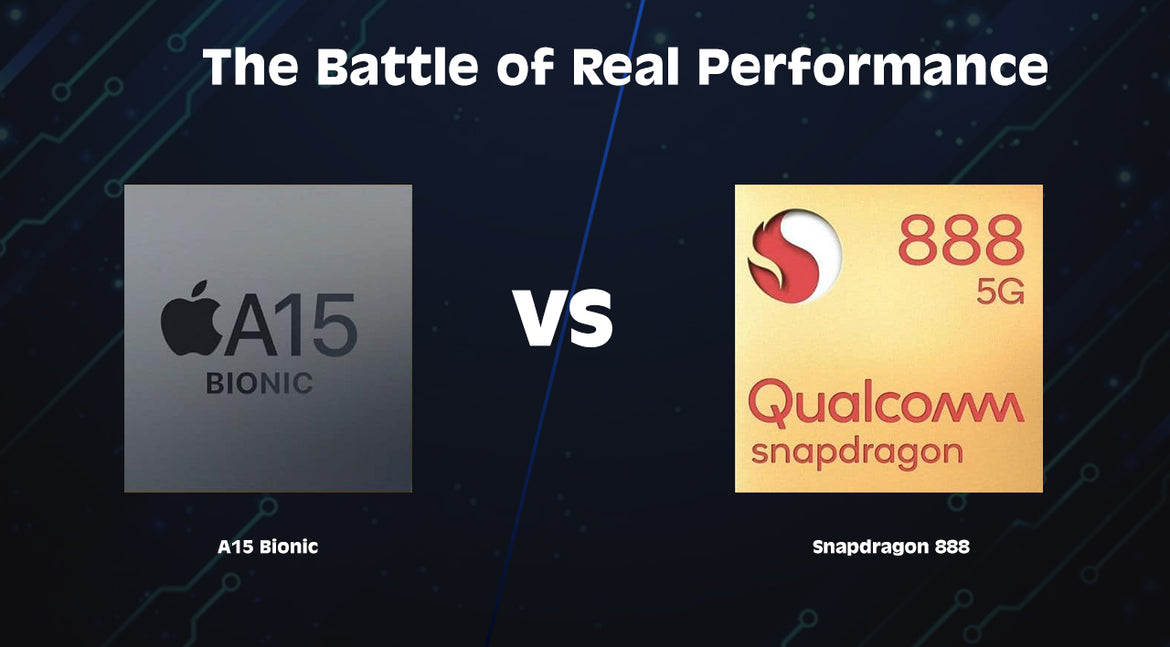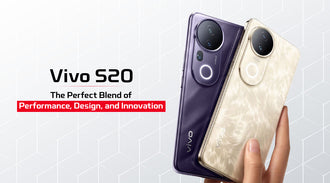
A15 Bionic vs Snapdragon 888 - The battle of real performance
- A15 Bionic chip, Snapdragon 888
- 11 Oct, 2021
Introduction
Chipsets have been giving extraordinary performance and setting new benchmarks with every upgrade. These new advancements are redefining the boundaries in the smartphone world once again. Apple announced its new range of iPhone 13 phones featuring Apple’s own A15 Bionic chipset. Apple iPhones are known to be great competitors in terms of CPU, GPU, etc. Whereas on high-end Android devices we can see Qualcomm’s Snapdragon 888 chipset. In order to analyze the winner is to do the standard benchmark tests. This would reflect the CPU and GPU scores for both the chipsets and the best performer will stand out.
A15 Bionic CPU - 50% faster than Qualcomm Snapdragon 888 CPU

Apple has claimed that its new SoC is faster than all of its competitors in the market. The tech giant made a huge claim saying that the new 6-core CPU in the A15 chip is about 50% faster than the competition. The chipset uses the traditional Hexa-core CPU design and is built on TSMC’s 2nd-gen 5nm process node.
The CPU also features two high-performance cores and four power-efficient cores. Apple has also doubled the system cache, which means the A15 Bionic chipset now has access to 32MB SLC. That should result in much better performance. The Apple A15 Bionic chipset has a neural engine that can process 15.8 trillion operations per second.
While Apple maintained the Hexa-core 2+4 CPU architecture, the Snapdragon 888 packs an octa-core set up with a 1+3+4 configuration. The main core is the all-new Cortex-X1 followed by three performance cores of Cortex-A78 and four power-efficiency cores of Cortex-A55. Since the size of both chipsets is small, the transistor count will be high, and also it will have higher power efficiency.
Apple’s iPhone 13 GPU 30% faster than snapdragon latest processor GPU

This GPU is manufactured in such a way that it can provide gaming at high frame rates and lower latency. Talking about the GPU, Apple also made bold claims that the A15 processor has a 30% faster graphics processing unit than the competition. The A15 Bionic chipset comes with a newly-designed 4-core GPU on the non-Pro variants. The iPhone 13 Pro and 13 Pro Max flagships were released to feature a 5-core GPU, and it is said to have a 50% GPU performance jump over the competition.
Meanwhile, the Snapdragon 888 packs the Adreno 660 with 840 MHz frequency. The Snapdragon 888 chipset has seen an improvement of 35% in the GPU department last year. The Adreno 660 GPU by Qualcomm Snapdragon 888 is equally capable of performing every task that the latest Apple 5-core GPU can.
Artificial Intelligence - Snapdragon 888 domain

The flagship Qualcomm chipset, Snapdragon 888 is built on the 5nm process and has been manufactured by Samsung. Snapdragon 888 is the 6th-gen AI accelerator, along with the Hexagon 780 DSP, and can deliver up to 26 TOPS (trillion operations per second). This level of AI performance is highest on any smartphone.
Last year’s A14 Bionic was capable of doing 11 trillion operations per second (TOPS), and the new 16-core Neural Engine on A15 Bionic has seen a healthy improvement. The Apple A15 Bionic chip features Neural Engine with 16-core architecture that delivers up to 15.8 trillion operations per second (TOPS) AI performance. Looking at the numbers for both the competition chipsets, it is safe to say that the Snapdragon 888 is leading. This clearly states that Snapdragon 888 SoC can offer better AI performance than the A15 Bionic chipset.
Geekbench Score - Concluding everything at Once
The Qualcomm Snapdragon 888 and A15 Bionic chipset are both very powerful processors. Geekbench Score can be used to know the best among the two rival chipsets. According to Geekbench 5 metric, high-end Android devices with Qualcomm Snapdragon 888 have achieved a score of about 1100 in single-core speeds and 3500 for multi-core performance.
On the other hand, Apple’s A15 Bionic scored 1734, which shows a 52% advantage over Snapdragon 888 in the single-core test. The Apple chip also scored 4818 in the multi-core performance giving it an advantage of 25% over the Snapdragon 888. Both the processors are great in terms of CPU and GPU, whether it is for iPhone or Android smartphones. In recent years we have seen the performance gap in CPU and GPU being considerably reduced for Apple and Android devices. For most of the users, SoC performance is not the prime parameter to buy their device but it is still an important factor.






























